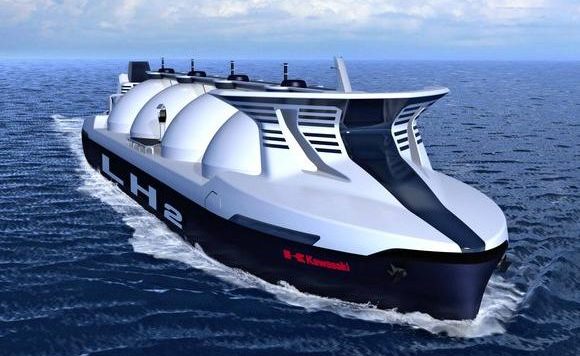
Japan’s three largest shipowners are joining forces with Kawasaki Heavy Industries and industrial gas firm Iwatani Corporation to develop hydrogen carriers together.
Mitsui OSK Lines (MOL), Nippon Yusen Kaisha (NYK) and Kawasaki Kisen Kaisha (K Line) are each taking a 16.6% in new firm JSE Ocean, designed to quickly build up Japan’s maritime hydrogen supply chains.
The country, via Kawasaki Heavy Industries, is already the pioneer of the seaborne hydrogen trades with the delivery of the Suiso Frontier, the world’s first liquefied hydrogen carrier. Now plans are afoot to supersize this first ship, and to get ships of up to 160,000 cu m on the water soon.
Japan’s Basic Hydrogen Strategy, revised by the Japanese government in June this year, identifies hydrogen as the alternative to fossil fuels as it targets decarbonisation. In the strategy Japan commits to a target of 3m tons a year of hydrogen by 2030, 12m tons a year by 2040, and 20m tons a year by 2050.
A first ship order from JSE Ocean is expected next year.
The many nascent seaborne trades such as liquefied CO₂ or hydrogen have given ailing Japanese shipyards a shot in the arm. Japanese shipbuilders were the pioneers for much of the liquefied gas carrier design breakthroughs of the 1970s and 1980s, something they aim to replicate as the world transitions to new energy forms.

Excellent teaming of three giant shipping companies towards decarbonization.